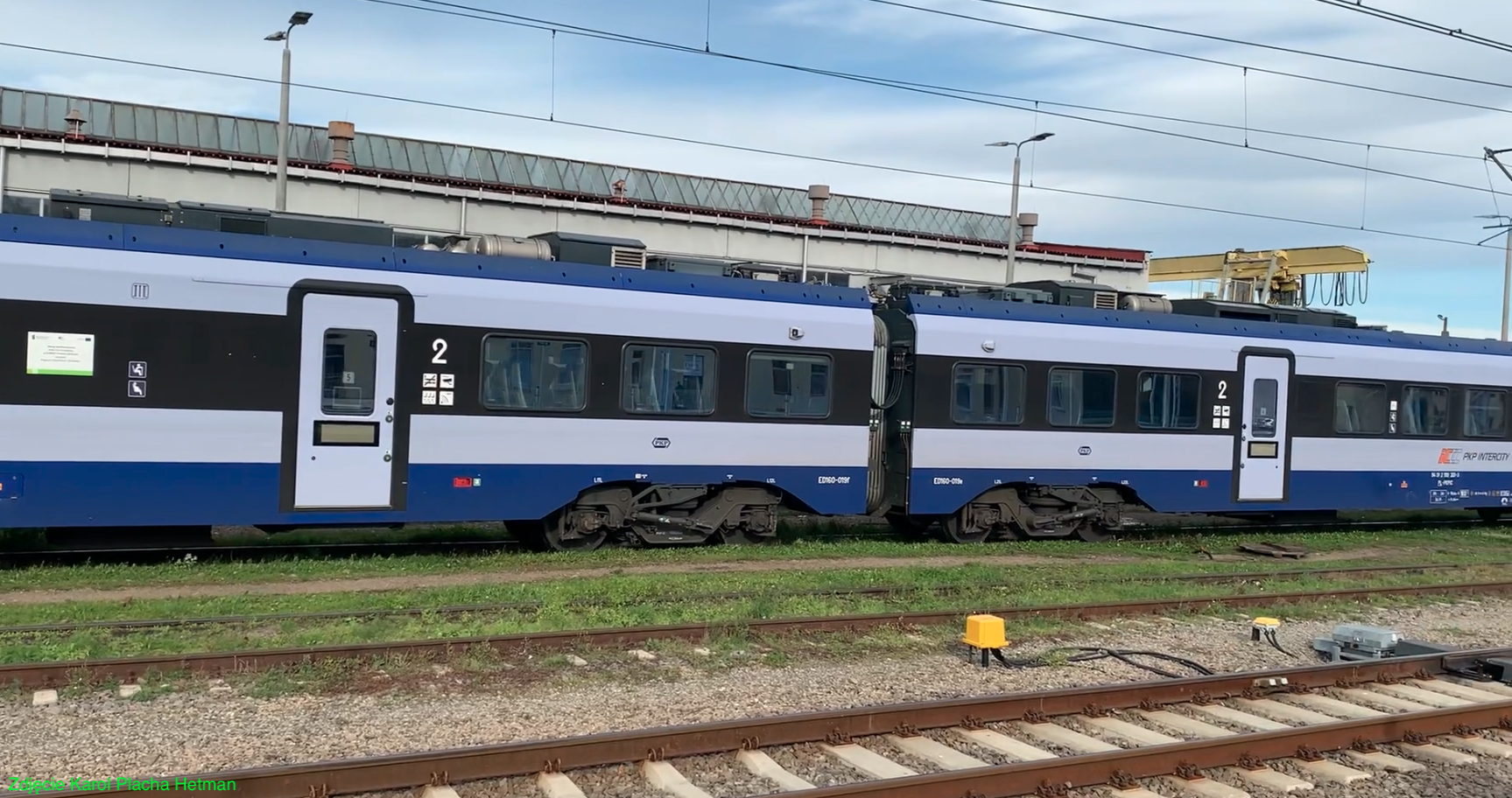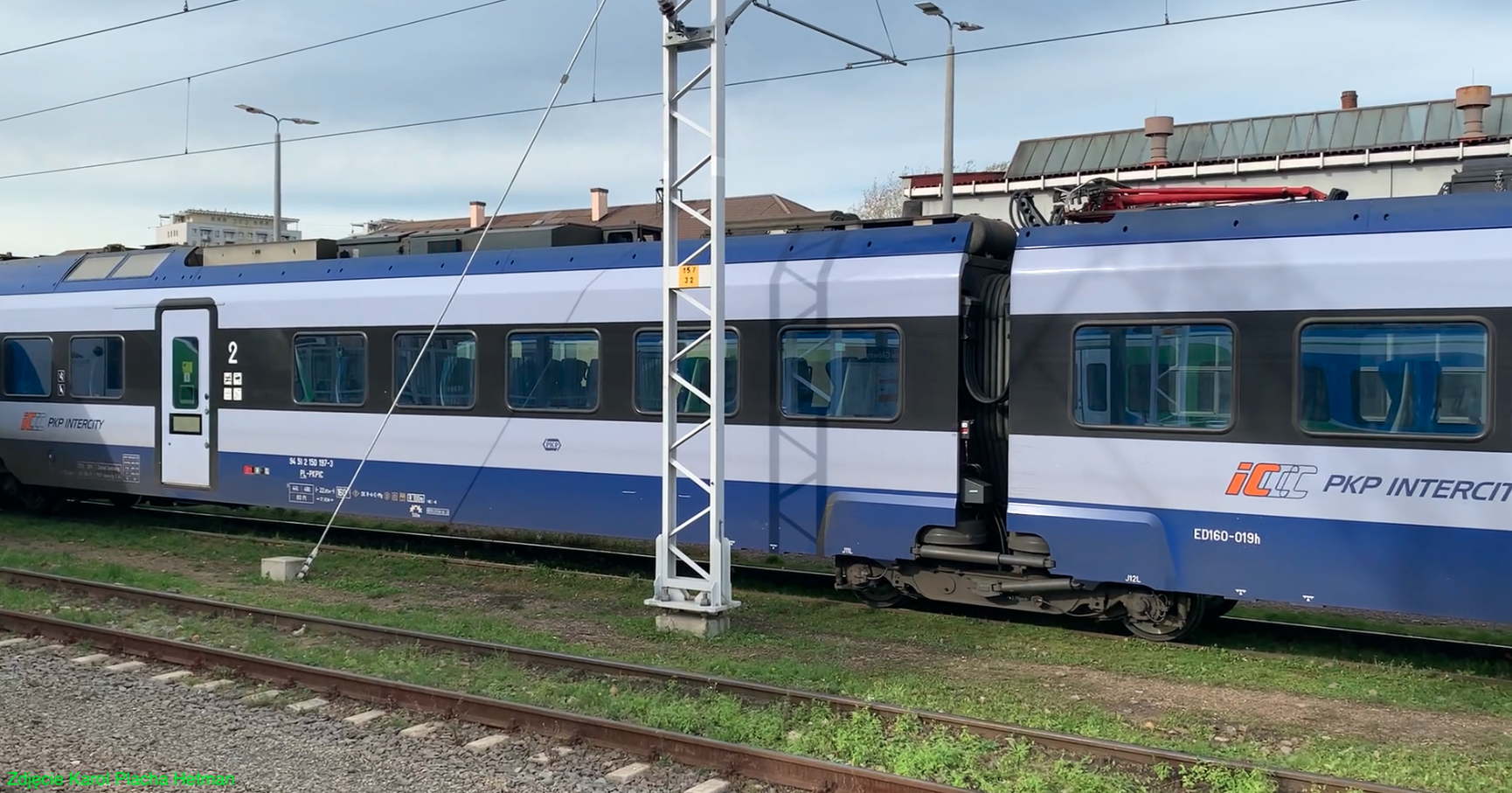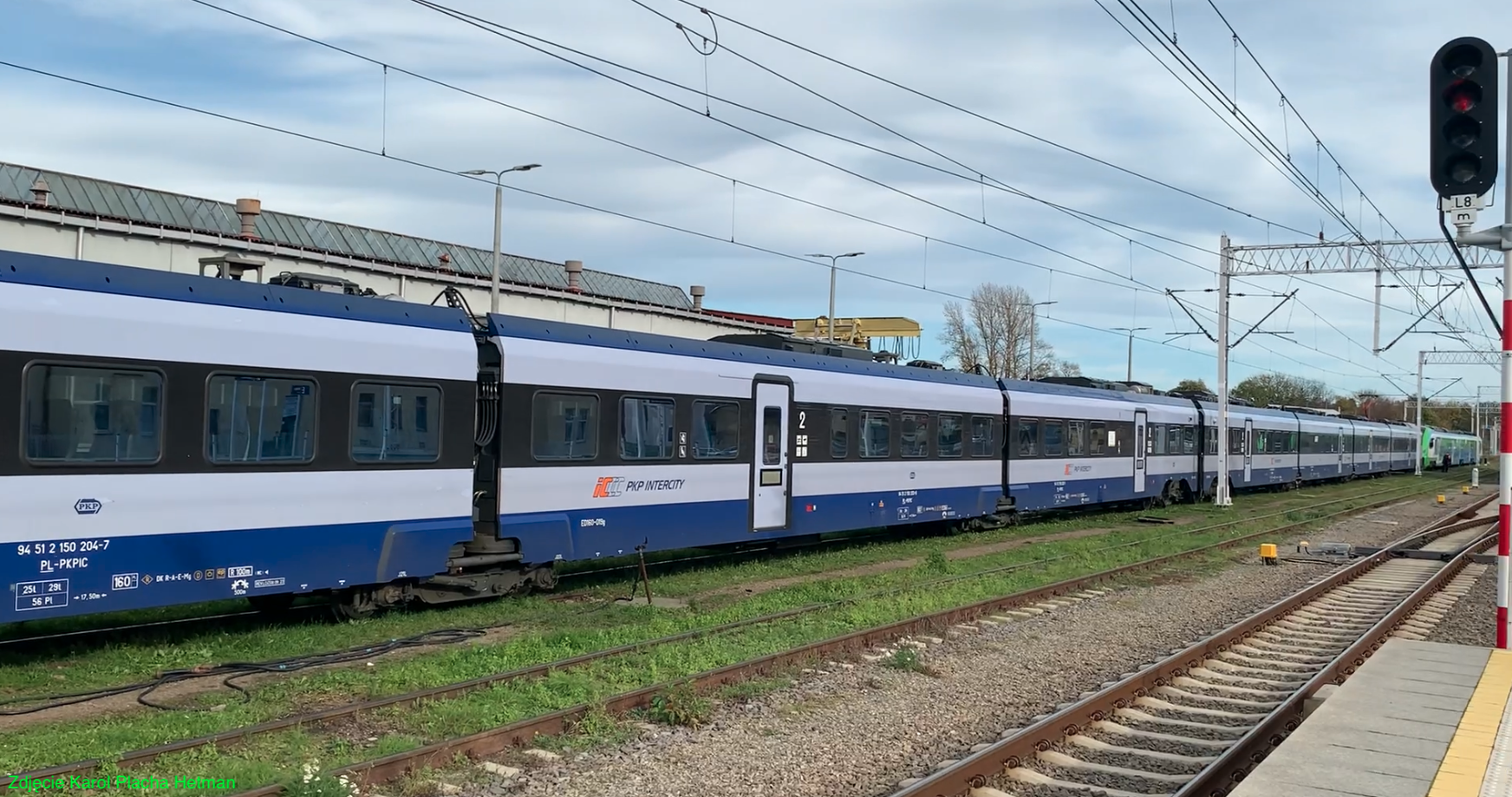Rzeszów 2023-12-04
EZT ED160-019 Stadler Polska.
Electric Multiple Unit ED160-019 type FLIRT Stadler Polska. PKP InterCity.
On November 18, 2013, PKP InterCity (at that time TLK) ordered 20 FLIRT electric multiple units intended for long-distance traffic from Stadler Polska (Switzerland) and Newag (Poland). InterCity was planned to connect the following cities: Warsaw, Kraków, Katowice, Olsztyn, Gdańsk, Gdynia and Szczecin. The traffic was to be routed along different routes than the InterCity Premium ED250 "Pendolino" trains. The contract amounted to PLN 1.156 million gross. The contract provides for the operation of trains for a period of 15 years. The name FLIRT stands for Fast Light Innovative Regional Train, i.e. a fast, light, innovative, regional train. Currently (2023), the next 12 units of EMU ED160 are being produced for PKP InterCity.




ED160 design.
The ED160 train consists of 8 carriages, without compartments. There are 60 1-Class seats in the interior in a 2+1 arrangement with an aisle in the middle. There are 294 seats in Class 2 in a 2+2 arrangement with an aisle in the middle. There are 8 seats for consumers in the bar car. Additionally, there are 6 foldable seats on the train. In the InterCity company, only tickets with seat seats are sold on FLIRT trains, but Stadler Polska provides standing seats on the train. The entire ED160 EMU train is 152.90 m long.
The structure of each wagon is made of closed profiles made of aluminum alloys, welded using automatic welding machines. Each carriage is accessed by one pair of doors, which are single-leaf, automatic, spring and slide. The entrance width is 0.94 m. Inside the carriage there are internal doors that divide the carriages into zones. The interior is quiet and the shock absorption of the train is very good. Throughout the entire length of the train, the floor is level, without any steps, at a height of 1.18 m from the rail head. The train is air-conditioned. There is full dynamic information for travelers. Passengers have six closed toilets at their disposal. Passenger seats are individual with blue fabric upholstery. The seats have individual additional lighting. Passengers have 230 V sockets and wireless Internet at their disposal. Each carriage has windows made of smoked glass. The windows are mounted in rubber profiles. The windows have small openings for emergency ventilation.
The first and second carriages are intended for 1st Class passengers. The first carriage also has space for bicycles, skis and strollers. Additionally, in the second carriage there is a service compartment and service rooms for the train staff. There is a shower and toilet for train staff. In the second carriage there is a bar and space for disabled passengers. There is a toilet for disabled people here. The next five carriages are Class 2. The length of the carriages varies. The first and eighth carriages are the longest. In these wagons, in addition to the mechanics' cabins, there is a large compartment for electronics and other equipment. The fourth and fifth carriages are of medium length. The shortest are the second, third, sixth and seventh wagons.
The train has ten bogies. Six bogies are rolling Jacobs type. Jacobs bogies have air suspension. Two trolleys are powered. These are the first and tenth carts. Each of the powered bogies has two 500 kW engines. The fifth and sixth bogies are traditional rolling bogies.
There are automatic couplers at the beginning and end of the train. The train can move in double traction. Maximum two trains. Automatic couplers are used for this connection. The connection between the wagons is by Jacobs bogies, and more precisely, the wagons in the trains are connected to each other by spherical joints.
The train has no outside rearview mirrors. Instead, cameras are installed, thanks to which the mechanic has a better view of the external image of the train and also has a view of the interior of the carriages. A cooling fan is mounted on the roof of each wagon, used to cool the drive equipment elements, the network choke system, the rectifier water cooler and the traction motors. One passenger compartment air conditioner was also installed on each carriage.
T-T data ED160:
Number of wagons 8. Axle arrangement Bo'2'2'2'2'+2'2'2'2'Bo'. Track width 1.435 m. Train length 152.90 m. Width 2.82 m. Height 4.12 m. Diameter of all wheels 0.92 m. Service weight 257,000 kg. Three-phase asynchronous drive motors, 4 x 500 kW. 3 kV DC traction. Acceleration 0.6 m/s2. Design speed 160 km/h. Number of seats 354.
Written by Karol Placha Hetman
